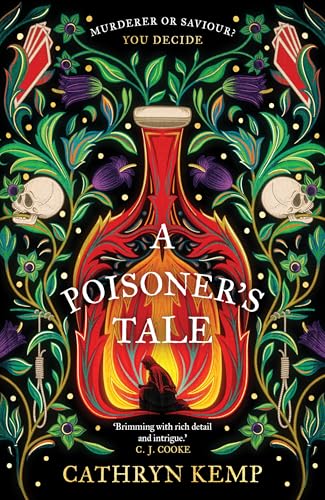A Poisoner’s Tale
Cathryn Kemp states that her novel ‘is dedicated to every woman who knows how it feels when his key turns in the lock’. This extraordinary narrative of a woman undertaking to champion the cause of her oppressed, exploited ‘sisters’, dispatching their abusive husbands to a well-deserved hell via a subtle poison, forms an absolute page-turner. Giulia Tofana offers her inherited skills as an apothecary to help all women through their trials and tribulations in 17th-century Rome. However, the papal obsession with purging the city of witches and heretics means that Giulia’s work is bound to be discovered. She gambles that her poison is undetectable but has not reckoned with the fears and jealousies that can lead to betrayal.
Whilst the opening shows us the inevitable, shocking ending, it is Giulia’s journey that absorbs us: Kemp never puts a foot wrong in her evocation of time, place, attitudes and beliefs. A modern reader will despair at recognising familiar misogyny and domestic violence, aghast and outraged at the fate of Giulia, her daughter, and close friends. Kemp shows us a sensual world of Catholicism at its arrogant worst – a dark place, where danger lurks in the corners of piazzas and behind the walls of palazzos. There’s a fascinating dual narrative – the voices of Giulia and her nemesis, Pope Alessandro VII, both caught up in the swirling corruption and debauchery of Rome on the edge of decline.
A vengeful serial murderer? Or a courageous woman prepared to sacrifice all to call men to account? Either way, Kemp takes her character from legend and makes us live with her as she moves from teenage victim of rape to condemned witch on the scaffold. This is not an easy read, but it’s an important one in the genre of historical fiction.










